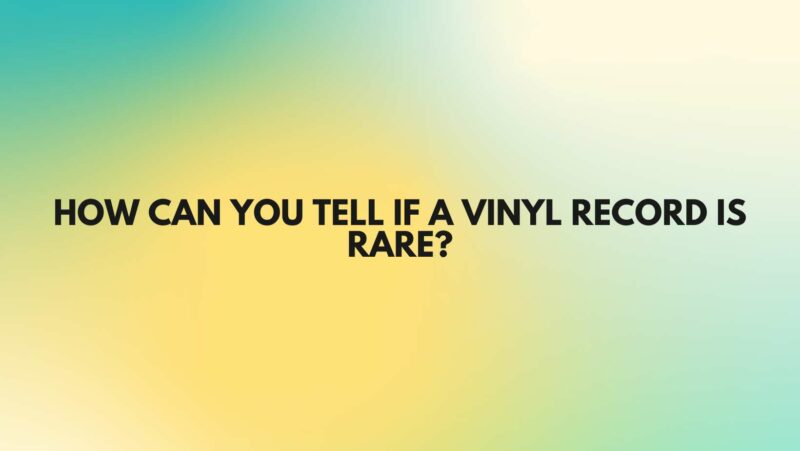Vinyl records have witnessed a resurgence in popularity, with collectors and music enthusiasts scouring record stores, thrift shops, and online marketplaces in search of hidden gems. Among the vinyl records available, some hold significant value due to their rarity. In this comprehensive article, we will explore the criteria and techniques that can help you identify rare vinyl records, allowing you to uncover valuable additions to your collection.
Section 1: Rarity Defined
Before diving into the details of how to identify rare vinyl records, it’s essential to understand what makes a record rare. Rarity can be attributed to several factors, including:
- Limited Pressings: Records produced in small quantities or as limited editions are inherently rare due to their scarcity.
- Historical Significance: Records tied to historical events, iconic performances, or cultural moments tend to be sought after by collectors.
- Errors and Variants: Records with manufacturing errors, unique label variations, or alternative covers can be highly collectible.
- Obscure Artists and Labels: Lesser-known artists and independent labels often produce records that become rare collector’s items over time.
- Withdrawn Releases: Records that were withdrawn from circulation due to legal or content issues can be particularly rare.
Section 2: Research and Reference
Identifying rare vinyl records begins with research and reference materials. Here are some valuable resources:
- Price Guides: Invest in reputable vinyl record price guides and collector’s manuals that list rare records and their estimated values. Guides like the “Goldmine Standard Catalog of American Records” are invaluable.
- Online Databases: Websites and databases like Discogs, Popsike, and MusicBrainz provide extensive information on vinyl releases, including rarity and market values.
- Collector Communities: Join online forums, social media groups, or local collector communities to tap into the knowledge and expertise of experienced collectors.
- Record Label Histories: Learn about record labels’ histories and their notable releases, as some labels have a reputation for producing rare records.
Section 3: Key Indicators of Rarity
Several indicators can help you identify whether a vinyl record is rare:
- Limited Editions: Look for records labeled as limited editions, often with a specific number out of a total quantity produced.
- First Pressings: First pressings of albums, especially those from iconic bands or artists, are often more valuable due to their historical significance.
- Unique Variations: Seek out records with unique variations, such as alternate covers, misprints, or colored vinyl.
- Low Catalog Number: Lower catalog numbers within a label’s catalog sequence may indicate earlier pressings, which are generally rarer.
- Promotional Copies: Promo copies sent to radio stations or industry insiders are often rare and may have unique labeling.
Section 4: Condition Matters
A vinyl record’s condition plays a crucial role in determining its value and rarity. Look for records in excellent condition with minimal wear, scratches, or surface noise. Records in their original packaging, including inner sleeves and inserts, are often more valuable.
Section 5: Verify Authenticity
When dealing with rare vinyl records, be cautious of counterfeits and reproductions. Familiarize yourself with the characteristics and markings of authentic releases, consult experts, and use online resources to verify authenticity.
Section 6: Conclusion
Identifying rare vinyl records requires a combination of knowledge, research, and a keen eye for details. By understanding what makes a record rare, utilizing reputable resources, and keeping an eye out for key indicators, you can embark on an exciting journey to discover valuable additions to your vinyl collection. Remember that rarity in the vinyl world is not always about monetary value; it’s also about preserving pieces of musical history and celebrating the art of collecting.


